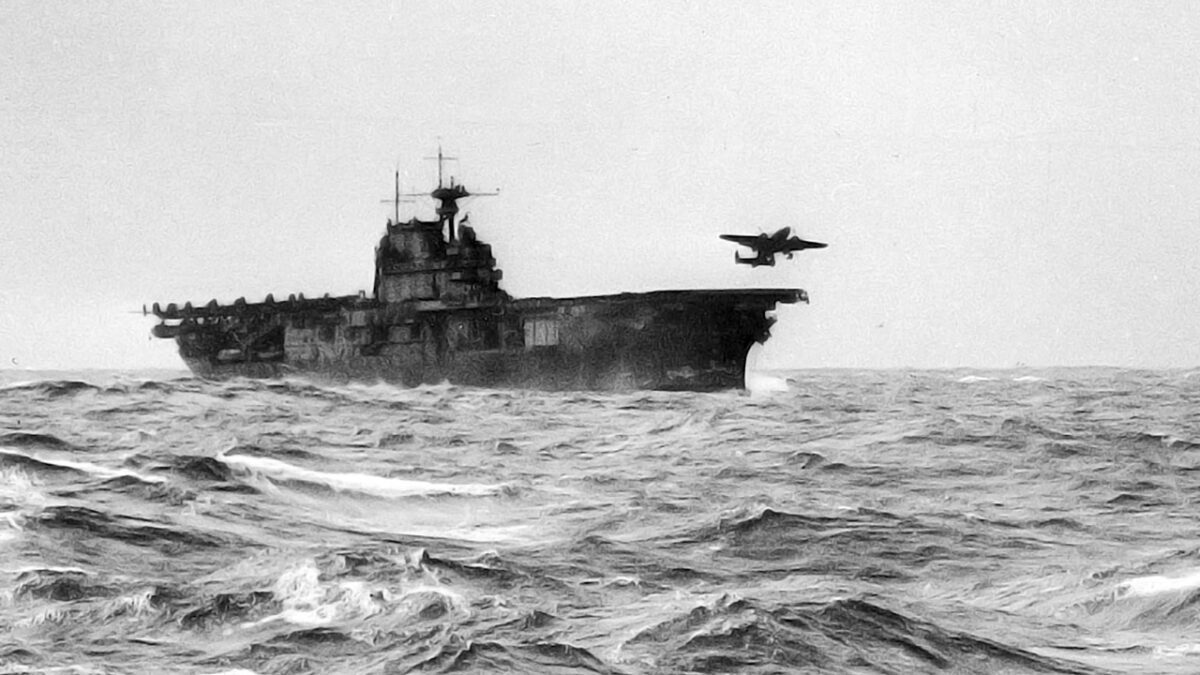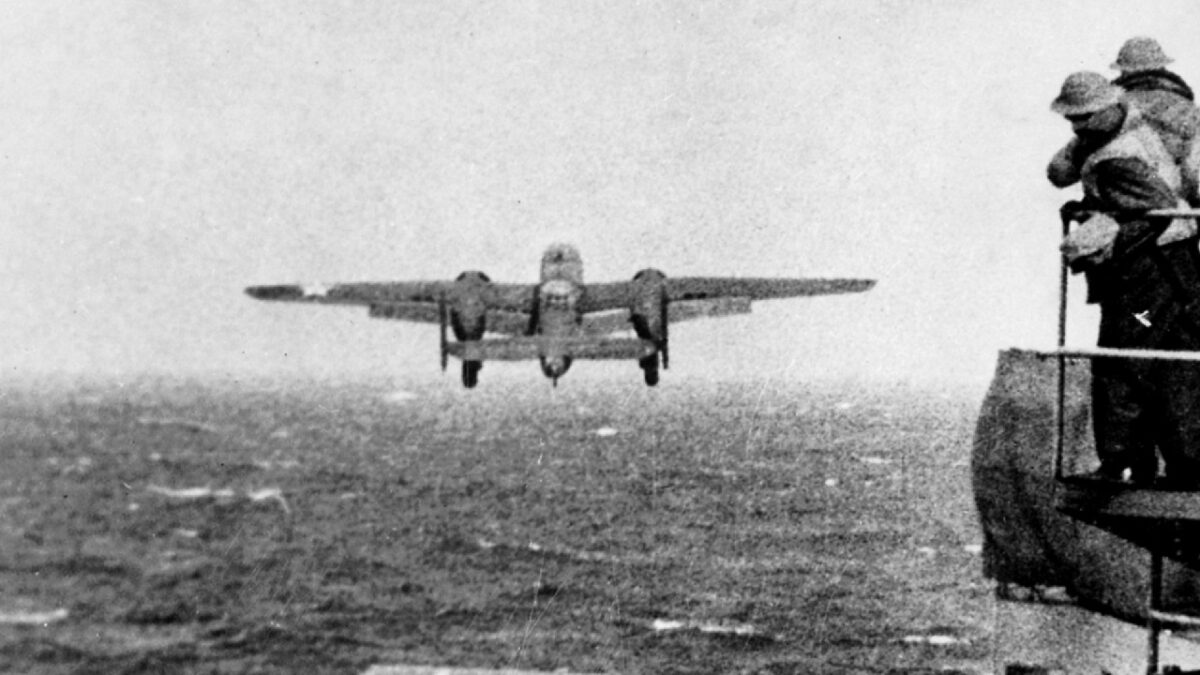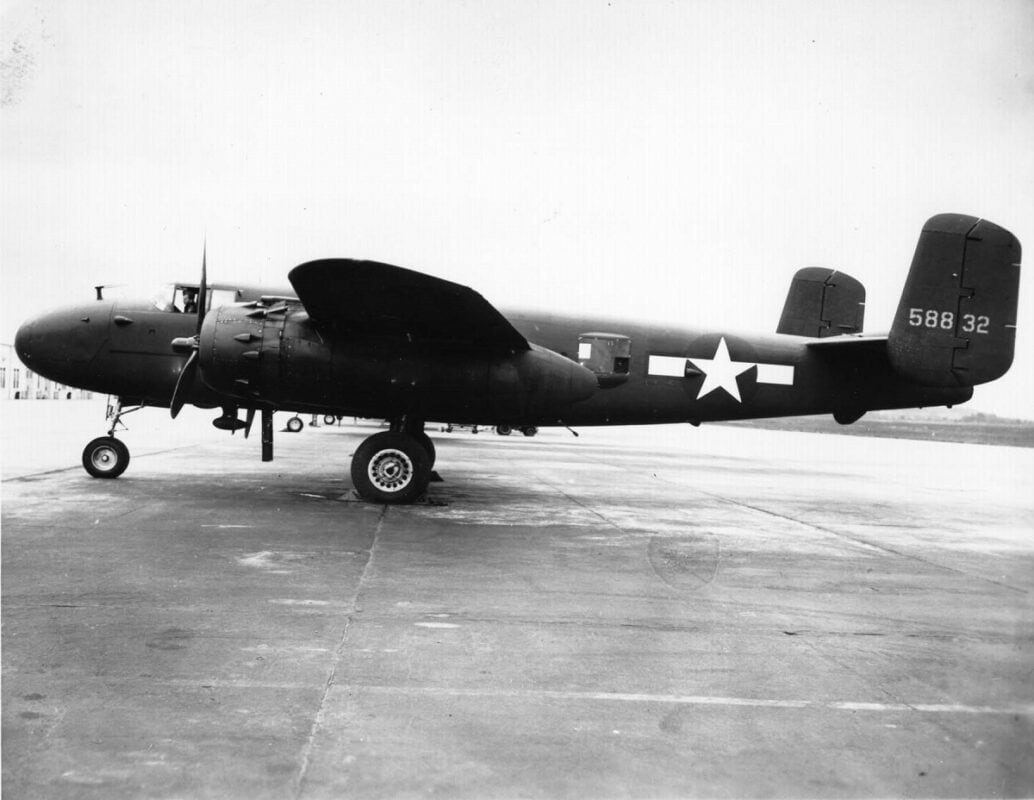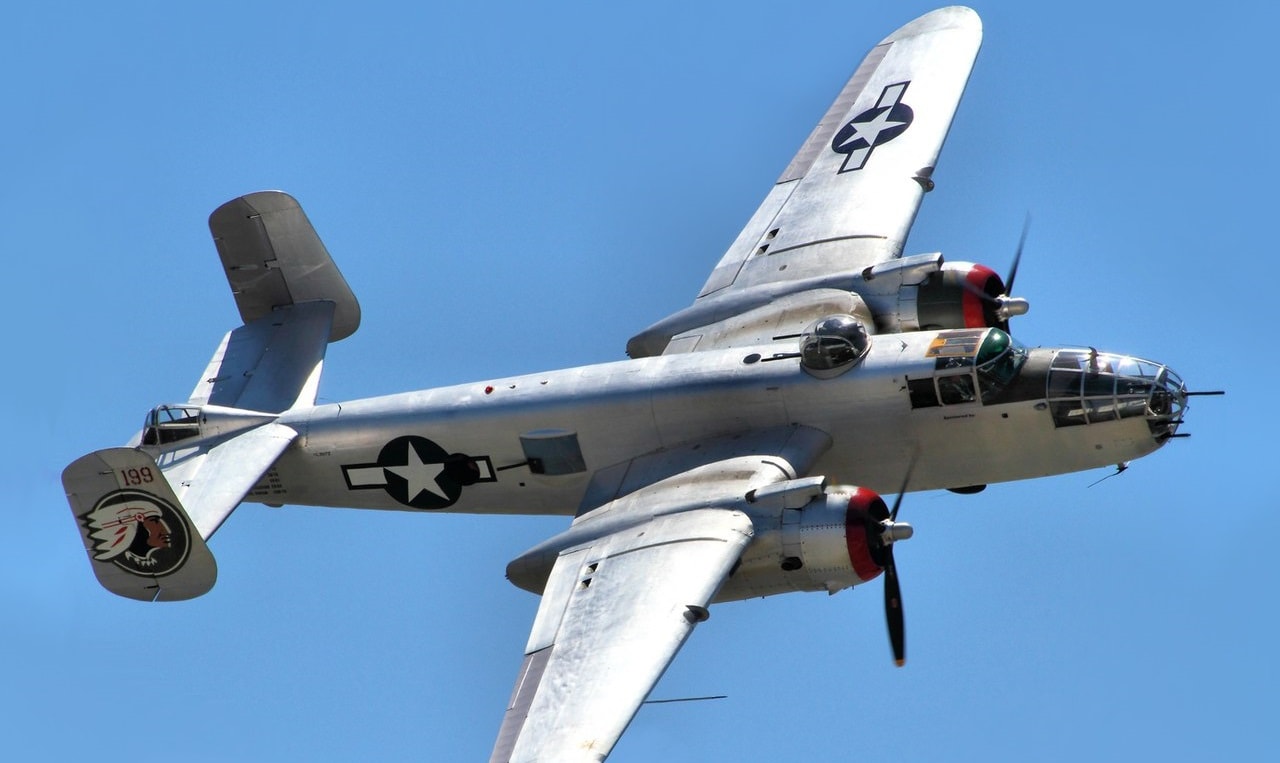Anybody who has studied the famous Dolittle Raid over Tokyo, whether via official histories and/or Hollywood-embellished movies such as Thirty Seconds Over Tokyo starring Spencer Tracy or 2001’s Pearl Harbor starring Ben Affleck, will be familiar with the B-25 Mitchell medium bomber. Without a doubt, the Doolittle Raiders‘ April 18, 1942 mission was hugely important to the American war effort in the Pacific Theater of WWII, in terms of boosting American morale after Pearl Harbor and concurrently causing a huge propaganda shock for Imperial Japan.
However, from a pragmatic standpoint, the mission did little in the way of physical damage to the Japanese war machine, and more importantly for our purposes here at 19FortyFive, it barely scratched the service of the contributions that the B-25 and her crews made toward ultimate victory in WWII. With that in mind, let’s take a closer look at this history-making warbird.
Worthy of the General’s Name
The B-25 Mitchell had arguably the proudest namesake of any American WWII aircraft — especially from a U.S. Army Air Forces (USAAF) perspective — that being the veritable “Father of the United States Air Force,” Gen. William “Billy” Mitchell. Built by North American Aviation (NAA) — the same company that produced the game-changing P-51D Mustang fighter plane of WWII — the mechanical Mitchell made her maiden (aha, alliteration) flight on August 19, 1940, and, as luck would have it, officially went into operational service in mid-1941, i.e. just in time for the Pearl Harbor Raid and America’s entry into WWII. Indeed, even before the immortalized retaliatory strike at Tokyo, a B-25 flown by the 17th Bombardment Group struck one of the earliest blows at Japan by sinking an Imperial Japanese Navy (IJN) submarine on Christmas Eve of 1941. The 17th BG would later transfer to the Atlantic and sink a German U-boat for good measure.
In standard configuration, the twin-engined B-25 carried a crew of five — pilot, navigator/bombardier, turret gunner/engineer, radio operator/waist gunner, and tail gunner — and a bomb load of 3,000 pounds (1,360 kilograms), which could also be adjusted to accommodate depth charges or a torpedo. Depending on the variant, the plane carried anywhere from 12 to 18 Browning M2 “Ma Deuce” .50 caliber machine guns. One variant, the B-25G, even packed a nose-mounted 75mm cannon, which, according to my 19FortyFive colleague Peter Suciu, essentially made the Mitchell the world’s first flying gunship (more on this shortly).
Measurements-wise, the Mitchell was 52 feet 11 inches (16.13 meters) in length, 16 feet 4 inches (4.98 meters) in height, with a wingspan of 67 feet 7 inches (20.6 meters), and a maximum takeoff weight of 35,000 pounds (15,876 kilograms). Max airspeed was 272mph (438kph/236 knots). Of the plane’s flying and handling characteristics, latter-day B-25 pilot Jim Harley offers praise upon it, deeming the aircraft “rock-stable … painfully easy on takeoff … and one of the most stable platforms in the landing configuration of any airplane I’ve ever flown, other than maybe the Mustang,” adding that the warbird’s prime strength is “its maneuverability for its size. I always likened it to a twin-engine Mustang. The one airplane I’d have liked to take into combat was the B-25. It’s not at all cumbersome—it’s a wonderful, rock-stable platform for combat.”
Mitchells Maul the Enemy
As previously indicated, the B-25 served in the Pacific and European Theaters during the Second World War. However, the USAAF observed that the faster B-26 Marauder was more suitable for operations in Continental Europe, so they operated the B-25 mainly in the Mediterranean and the Pacific. That said, the B-25 was used on at least one occasion to destroy a significant number of Luftwaffe Messerschmitt Me 262 jet fighters on the ground during an April 1945 strafing mission.
Other users of the B-25 included — but were certainly not limited to — the RAF, the Soviet Air Force, the U.S. Navy, and Marine Corps. In RAF hands, the 2nd Group of RAF Bomber Command flew its first mission on 22 January 1943 against oil storage facilities in Belgium. In the case of the USN/USMC, the plane was officially re-designated the PBJ-1; a total of 706 of these PBJ-1s were delivered to the Navy and Marine Corps, and nine different USMC squadrons used the PBJ-1 in combat. On a quick personal note, one of the USMC units to use the PBJ was Marine Air Group 61 (MAG 61), with whom my Dad, then-PFC Earle W. Orr Jr, served as an aircraft armorer.
Going back to the gunship role, the Mitchell’s pilots could indeed use that 75mm gun to devastating effect; one Mitchell crew thus sank an IJN destroyer with a mere seven hits! However, the pilots generally preferred the machine guns to the slow-firing cannon for strafing purposes, especially against airfields. Moreover, the B-25 crews’ single most effective tactic against Axis shipping was skip-bombing, i.e. bombs were literally skimmed like stones across ocean wave tops into the sides of the vessels’ hulls. In one instance, 12 B-25s from the 3rd Bombardment Group skip-bombed and sank four cargo vessels and two destroyers in the first 15 minutes of their first combat mission.

In a photograph found after Japan’s surrender in 1945, Lt. Robert L. Hite, copilot of crew 16, is led blindfolded from a Japanese transport aircraft after his B-25 crash landed in a China after bombing Nagoya on the the “Doolittle Raid” on Japan and he was captured. He was imprisoned for 40 months, but survived the war.

A U.S. Army Air Forces North American B-25B Mitchell bomber takes off from the aircraft carrier USS Hornet (CV-8) during the “Doolittle Raid”. Original description: “Take off from the deck of the USS HORNET of an Army B-25 on its way to take part in first U.S. air raid on Japan. Doolittle Raid, April 1942.” Clarence M. “Bob” Logsdon(shorter man in foreground) and Allen Q. Nations (directly behind Logsdon) watch as a B-25 leaves the deck of Hornet on 18 April, 1942. Mr. Nations perished at the battle of Santa Cruz Islands when a Japanese “Val” dive bomber crashed into the Hornet’s signal bridge. Logsdon survived and in 2001 related “the death of the Hornet” in Robert Ballard’s (who found the Titanic) book, “Graveyards of the Pacific.”
Last but not least, the Mitchell was quite good at destroying enemy bridges. As noted by Aviation History Contributing Editor Stephan Wilkinson, “One Mitchell unit operating in Burma, the 409th Bomb Squadron, became so good at destroying bridges that it named itself the Dental Clinic … for its bridgework.”
Where Are They Now?
After the war, the newly-independent U.S. Air Force converted a number of its Mitchells into unarmed transports and training craft, with the last such VIP transport being retired on May 21, 1960. A goodly number of Latin American air forces used the B-25 subsequent to WWII, as did Indonesia, which was the last to retire the aircraft in 1979.

Out of the total number of 9,816 B-25s built, a fair number of them survive today in airworthy condition, thanks to air museums and private collectors alike. Six of these belong to the Commemorative Air Force (CAF), including Devil Dog out of Georgetown, Texas, on which you can buy a ride for a mere $425.00.
Christian D. Orr is a former Air Force officer, Federal law enforcement officer, and private military contractor (with assignments worked in Iraq, the United Arab Emirates, Kosovo, Japan, Germany, and the Pentagon). Chris holds a B.A. in International Relations from the University of Southern California (USC) and an M.A. in Intelligence Studies (concentration in Terrorism Studies) from American Military University (AMU). He has also been published in The Daily Torch and The Journal of Intelligence and Cyber Security. Last but not least, he is a Companion of the Order of the Naval Order of the United States (NOUS).

